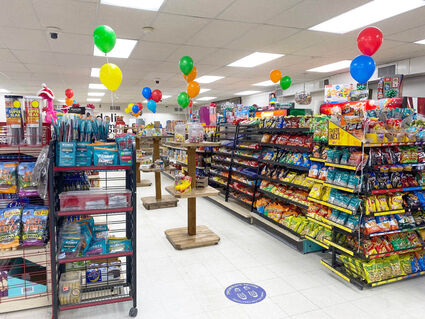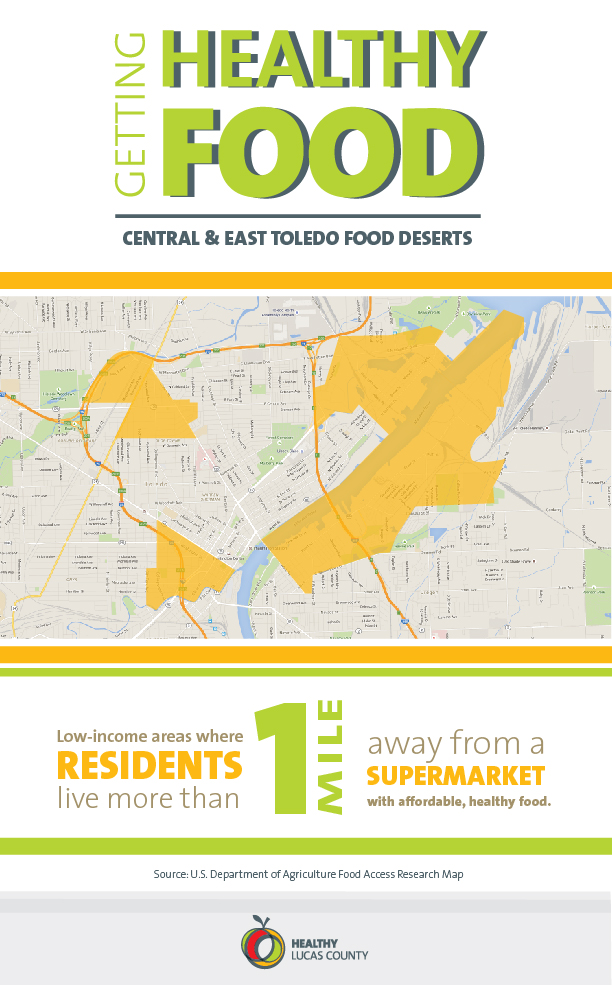Food deserts are becoming more common in the United States as low-income areas expand throughout the country and communities increasingly face the economic impacts of the Covid-19 pandemic. By leveraging several federal funds, local governments across the United States are striving to solve the problem of food deserts. Here are a few examples of how communities are using federal funds to increase access to healthy food.
- The Fort Belknap Reservation in Montana is using American Rescue Plan (ARP) funds to rebuild grocery stores, strengthening access to healthy and nutritious food. (more…)
- Low-income communities of Toledo, Ohio, have asked the local government to use a portion of federal infrastructure funds to revitalize the city’s ailing grocery stores and ensure a healthy food supply for the community. (more…)
- The idea of utilizing federal funds to address the problem of food deserts has spread to other communities in a variety of states. (more…)
Background Information: What Are Food Deserts?
Full Report: America’s food deserts start seeing influx of healthy foods thanks to federal funds
Ending Food Desert Problems in the Fort Belknap Reservation
Fort Belknap is a Native American reservation and settlement for Assiniboine and Gros Ventre tribes. A large portion of this area is classified as a food desert. Here’s how the community is using funds from the American Rescue Plan (ARP) (a pandemic-relief package passed in 2021) to address the reservation’s food desert problem.

Source: Blaine County Journal
- The Little River Trading Post, formerly a gas station and convenience store for tourists, has been transformed by Indigenous-owned Island Mountain Development Group into a fresh produce grocery store offering fresh fruits and vegetables. This helps provide a healthier variety of food not only for tourists but for the community as well.
- Using ARP funds, the Island Mountain Development Group is planning to expand the successful fresh produce grocery store to other areas in the region. This would allow more citizens to have easy access to healthy food.
Increasing Healthy Food Availability in Toledo, Ohio

Source: Healthy Lucas County
Access to healthy food in Toledo, Ohio is decreasing due to the continuous closures of grocery stores. Here’s how and why the community demanded that the local government use federal infrastructure funds to increase access to healthy food in the region.
- Toledo’s Black population has been suffering from different health problems, such as obesity, high cholesterol, and high blood pressure. This is due to a lack of healthy food availability in the community.
- Closure of grocery stores is one of the biggest causes of food deserts in the region. Closures are occurring because many grocery stores could not make enough profit in low-income communities, forcing them to transfer to areas where they could earn more.
- Activists in Toledo recently pushed their local government to use federal infrastructure funding of at least $1 million to encourage the creation of new grocery stores in low-income areas. This would help increase the availability of healthy food, which could help them in addressing community health problems.
Other Communities Utilizing ARP Funds to Tackle Food Deserts
The idea of utilizing federal funds to address the problem of food deserts has spread to various communities across the United States. Here’s a summary of their proposals and initiatives.
- The city of Birmingham, Alabama is seeking the best strategy on how to use ARP funds to provide more nutritious food to the community. One of the strategies they’ve considered is renovating closed grocery stores to turn them into subdivided food stores that could attract new companies.
- The principal chief of the Cherokee Nation in Marble City, Oklahoma sees the importance of nutritious food availability in their rural community. Because of this, the Nation is considering establishing a grocery store that offers fresh and nutritious food with the support of ARP funds.
- The city of Austin, Texas is aiming to establish a pilot store using ARP funds that will provide a variety of food options for the city’s residents. This will help reduce food deserts in the area as some regions struggle with food availability due to the lack of grocery stores.
- The county of Macon-Bibb, Georgia is utilizing 1 million USD from ARP funds to establish a grocery store that could help alleviate food insecurity in low-income communities.
- The city of Charleston, West Virginia plans to open “Miss Ruby’s Corner Market” near a senior community where healthy food is inaccessible due to a lack of nearby grocery stores.
- Memphis and Washington DC are also aiming to utilize ARP funds to establish grocery stores in order to ease food inaccessibility.
Sources:
“America’s food deserts start seeing influx of healthy foods thanks to federal funds” The Guardian, April 29, 2022
https://www.theguardian.com/environment/2022/apr/29/us-food-deserts-federal-stimulus-funds